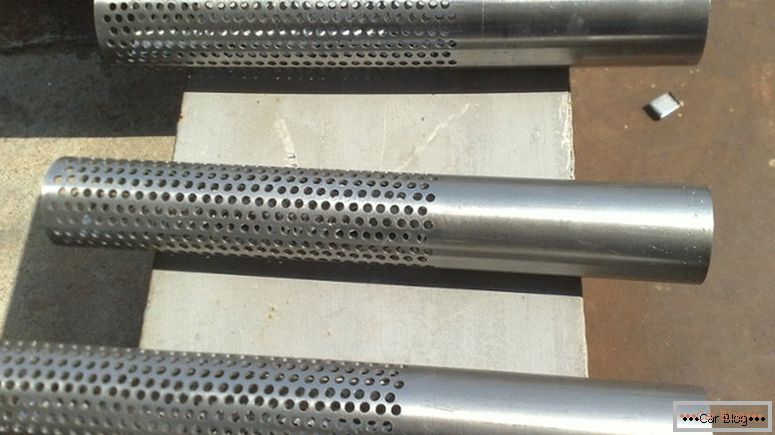>
By design, the fuel system of the car should be tight. In fact, the water often falls into the gas tank.

The main causes of moisture accumulation:
- When refueling, air enters the tank. Due to its humidity, condensate is subsequently formed.
- Sometimes water gets along with gasoline or diesel. Despite the fact that gas stations have devices for measuring impurities in the fuel, the procedure itself is often passed. All content is poured into the repository indiscriminately.
- Some components of high-octane gasoline attract moisture, which eventually settles at the bottom of the fuel tank.
- It is not necessary to exclude fraud, in which unscrupulous gas station employees dilute the fuel, taking away a part of the clean. Approximately the same may be dishonest neighbors in the parking lot.
Читать далее об удалителях влаги из бензобака-->Влага в бензобаке может привести к сбоям и выходу из строя системы: в тёплое время года ход машины нарушается, двигатель «чихает». Зимой же вода просто замерзает, приводя в негодность топливный агрегат.
Moisture remover application
The name of the product speaks for itself - when pouring liquid into the gas tank, it acts as an intermediary by mixing water and fuel, feeding diluted gasoline or diesel to the engine.
It is important to understand that the fuel itself does not mix with water. When you try to pour them into a transparent flask, you can see that gasoline instantly rises to the top. In the car, a similar process occurs. Even when shaking the flask, mixing does not occur.
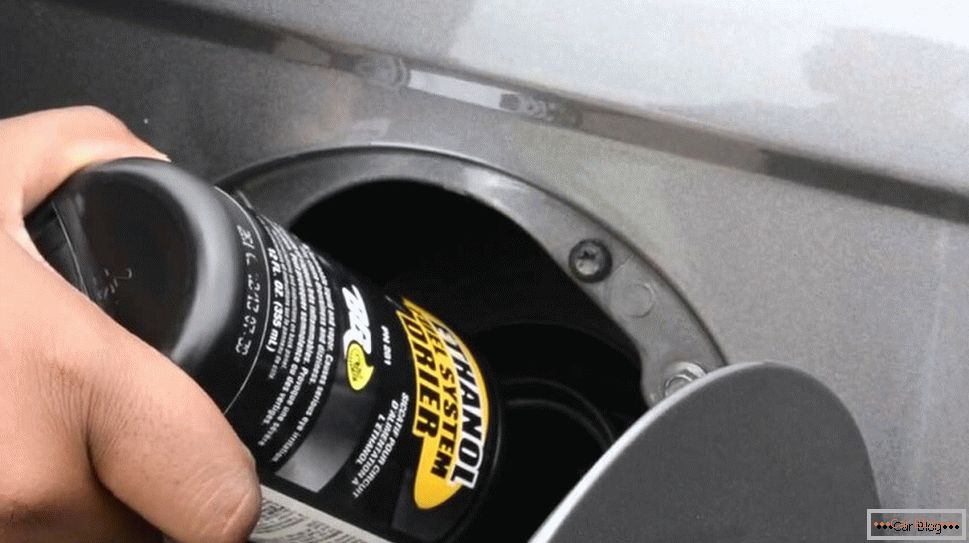
Completely remove moisture from the tank will not work. Moreover, this is not considered necessary. In the system there will always be a few tens of milliliters of water, which does not affect the performance of the car. You should be guided by the dashboard readings: if the signal comes on that there is a lot of impurities in the fuel, you should pour the water remover into the gas tank. Therefore, it makes sense to always carry a container with this liquid.
The active ingredients of the product are various alcohols, as well as additives, which, according to the manufacturer, have a positive effect on the fuel system. In order to remove water and litter, simply pour the moisture remover in the gas tank.
Lab test
In order to verify the efficiency of the product, you can make the following experiment: pour the liquids you want to mix into a transparent chemical flask and check the reaction. The first question is: how much moisture remover should I use? Pouring 500 ml of gasoline and 10 ml of water into the container, you can begin to add the agent. Imitating the conditions of the trip by constantly shaking the flask, we can assume that the real process will take place in a similar vein.
When the moisture remover was infused, the following results came to light: the compositions of 3TON and Expert showed themselves best - when they added only 60 milliliters, they did an excellent job. The tool company STP showed worse result - it took 140 ml. All manufacturers claim that the amount of the composition is designed for 40-50 liters of fuel. What is the difference between the results? Most likely, the arithmetic is indicated for the amount of water, but because no one knows for sure how much moisture is in the fuel system of his car. In addition, it is recommended to fill in a moisture remover before refueling.
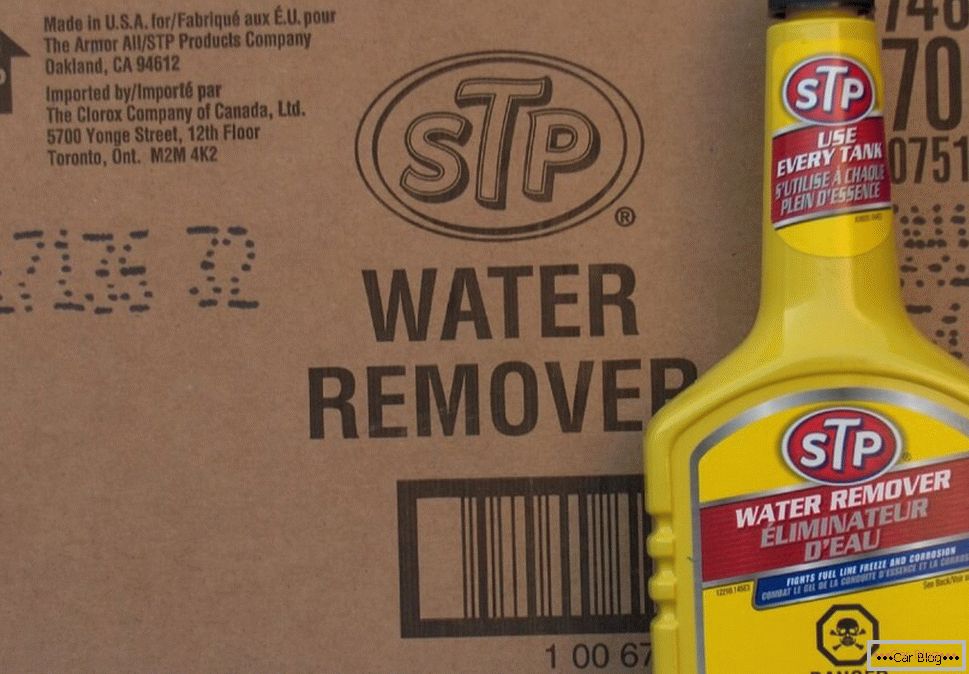
For the purity of the experiment, the flasks were left for a day. This brings the experience to real conditions, when after refueling several liters the car does not spend everything in the first hours. With prolonged mixing, the leader was the BBF product, retaining most of the moisture in the fuel. The rest of the funds “landed” everything on the bottom of a beaker in different but significant quantities. The best in the first experiment, the composition in fact turned out to be the least reliable - after a day all the water was on the bottom of the flask. It should be noted that in all cups with shaking the moisture shifted again.
Lessons learned
Anyway, all moisture removers have shown their effectiveness. The experiment showed that the funds are not designed for a serious amount - they are needed, rather, for prevention. To bring out a large amount of water will help the classic way with the unscrewing and dismantling of the gas tank, and a variety of formulations to complete the effect should be used regularly, especially in the fall - in the wet season before the frost.
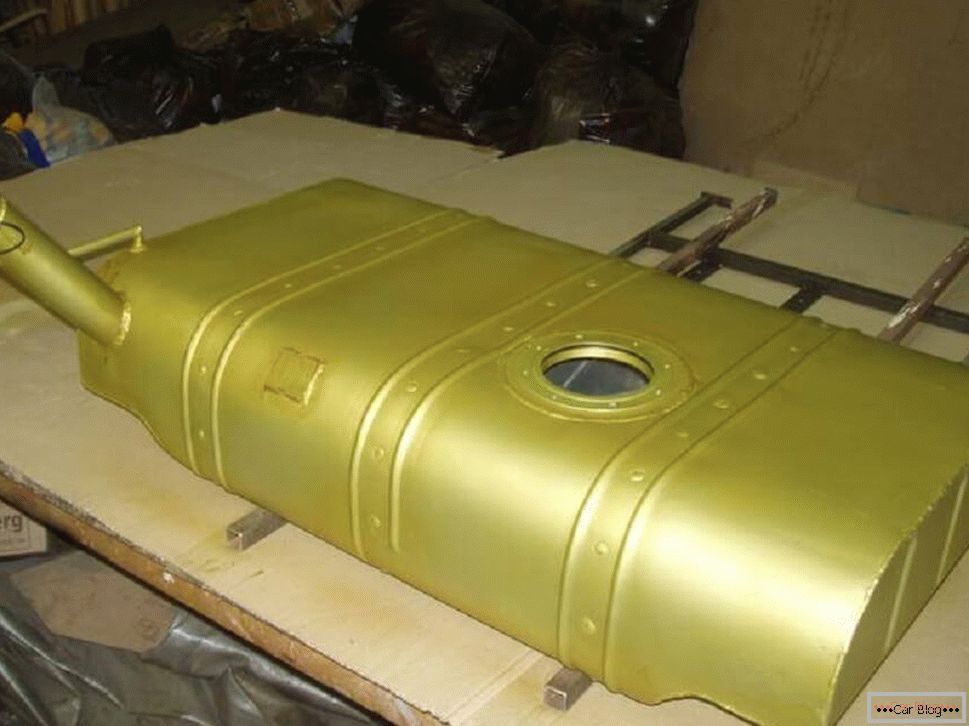
 Discounts for new cars! Profitable loan from 9.9% installments 0%
Discounts for new cars! Profitable loan from 9.9% installments 0%  adom.ru
adom.ru
Do not abuse the moisture remover, pouring several containers into the gas tank. They contain alcohols, which in large quantities provoke corrosion of the fuel system. You need to have a sense of proportion.
Funds rating
Comparing the impurity removers for gasoline and diesel, the criteria are efficiency, versatility and price for a certain volume:
- Remover from BBF. Manufacturer - Russia. 325 ml, 55 rubles. Calculation: 40–60 liters of fuel. Quickly picks up and keeps moisture well in fuel for a long time. An effective tool at an affordable price.
- Expert. Produced in Russia. 250 ml, 45 rubles, 40–60 liters of fuel. It perfectly lifts impurities from the bottom, but keeps them very poorly in fuel. Use of this tool is possible only with constant movement.
- Run Way, Russia. 300 ml, 35 rubles. 50–60 liters of gasoline or diesel. The drug has many additional properties such as reducing corrosion and reducing detonation, which sets it apart from the two leaders. This is both a plus and a minus at the same time - universal means, as a rule, do not do well with the main goal - raising and retaining moisture. This principle holds true here. The advantage of this composition is a low price.
- 3TON, Russia. The universal remedy calculated on 45–80 liters. 45 rubles for 354 ml. This tool also shows low profile efficiency.
- STP, United Kingdom. 85 rubles for 946 ml. The moisture remover from the gas tank is designed for 40–80 liters of fuel. It has the lowest efficiency in the rating, removing only 15–20 ml of water. The manufacturer claims that the product does not contain alcohols, which does not incapacitate a vehicle during an “overdose”. In this case, however, it is unknown what the active component of the composition.
Conclusion
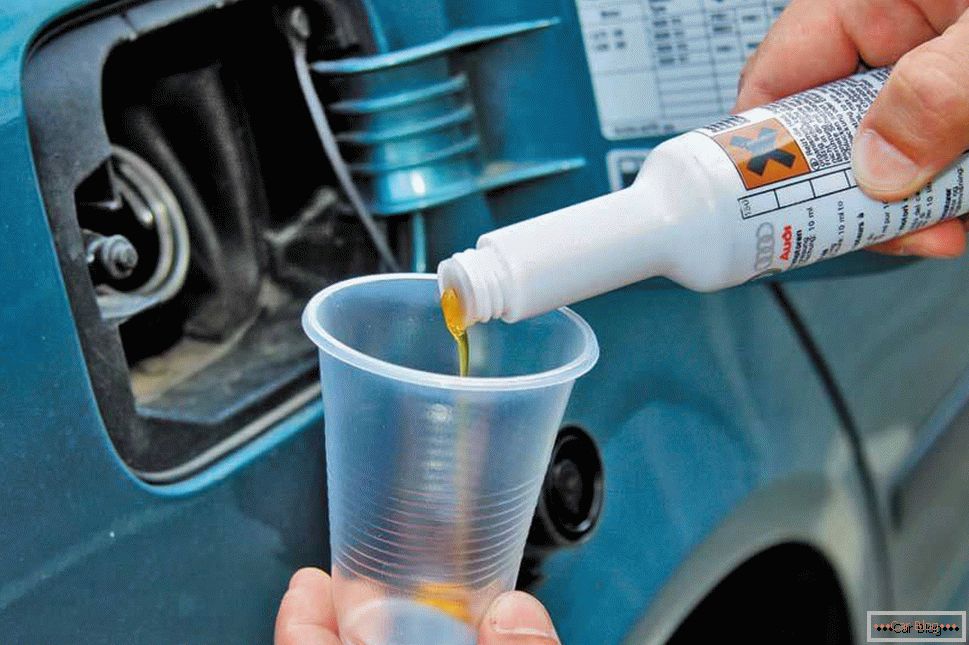
The abundance of moisture in the gas tank leads to the fact that the fuel system of the machine fails. Water, of course, does not burn - this is the cause of problems in the engine. Thus, it is recommended to regularly carry out prophylaxis with the use of moisture removers, which will allow the machine to serve for a long time and reliably.

